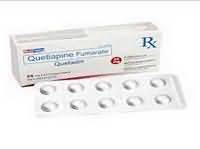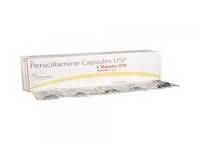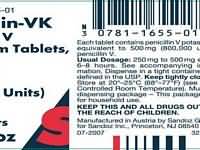Quetiapine

CLINICAL USE
Schizophrenia Mania
DOSE IN NORMAL RENAL FUNCTION
Schizophrenia: 50–750 mg daily in 2 divided dosesMania: 50–400 mg twice daily
PHARMACOKINETICS
Molecular weight :883.1 (as fumarate) %Protein binding :83 %Excreted unchanged in urine : <5 Volume of distribution (L/kg) :6–14half-life – normal/ESRD (hrs) :6–7/Unchanged DOSE IN RENAL IMPAIRMENT
GFR (mL/MIN)
20 to 50 : Initial dose 25 mg/day and increase in increments of 25–50 mg/day according to response 10 to 20 : Initial dose 25 mg/day and increase in increments of 25–50 mg/day according to response <10 : Initial dose 25 mg/day and increase in increments of 25–50 mg/day according to response DOSE IN PATIENTS UNDERGOING RENAL REPLACEMENT THERAPIES
CAPD :Unknown dialysability. Dose as in GFR <10 mL/min HD :Unknown dialysability. Dose as in GFR <10 mL/minHDF/high flux :Unknown dialysability. Dose as in GFR <10 mL/minCAV/VVHD :Unknown dialysability. Dose as in GFR 10 to 20 mL/min IMPORTANT DRUG INTERACTIONS
Potentially hazardous interactions with other drugs Anaesthetics: enhanced hypotensive effect Analgesics: increased risk of convulsions with tramadol; enhanced hypotensive and sedative effects with opioidsAntibacterials: concentration possibly increased by macrolides – reduce dose of quetiapineAntidepressants: concentration of tricyclics possibly increasedAnti-epileptics: antagonism of convulsive threshold; metabolism accelerated by carbamazepine and phenytoin Antifungals: concentration possibly increased by imidazoles and triazoles – reduce quetiapine doseAntimalarials: manufacturer advises avoid use with artemether and lumefantrineAntivirals: ritonavir possibly increases concentrationAnxiolytics and hypnotics: enhanced sedative effectsSibutramine: increased risk of CNS toxicity – avoid concomitant use ADMINISTRATION
Reconstition
– Route
Oral Rate of Administration
–Comments
– OTHER INFORMATION
Plasma clearance is reduced by 25% in severe renal impairmentAbsorption is increased by food so it should be taken consistently either with or without food.
See how to identify renal failure stages according to GFR calculation
See how to diagnose irreversible renal disease
Home









